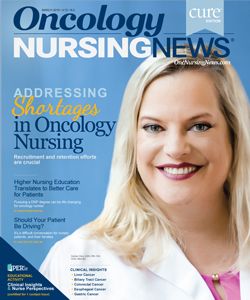Patient Communication Tool Improves Patient Satisfaction With Oral Chemotherapy Provision
Smilow Cancer Hospital, a large academic, National Cancer Institute–designated center with 10 community locations in Connecticut, has a standardized, centralized process for oral chemotherapy prescription management to ensure safe administration to patients
Smilow Cancer Hospital, a large academic, National Cancer Institute—designated center with 10 community locations in Connecticut, has a standardized, centralized process for oral chemotherapy prescription management to ensure safe administration to patients. Despite the organized process, patient feedback revealed delays between the time a prescription is ordered and the time it is dispensed. Patients’ anxiety due to their lack of understanding and knowledge of the process caused an increase in call volume among the patients, the pharmacy team, and providers.
Patients had questions about medication supply, insurance coverage, and safe handling, as well as other general concerns. Because delays and patient confusion can cause loss of adherence and a poor patient experience, the hospital created a communication tool to explain the process clearly.
ASSESSING THE NEED
Smilow Cancer Hospital compiled qualitative and quantitative information from practice and infusion nurses about call volume and the types of calls received regarding oral chemotherapy prescriptions. The context of many of the calls was the same: Patients had a lack of awareness about when they would receive their prescriptions, why they could not get them immediately, and the extreme importance of maintaining the treatment schedule.
Under the hospital’s oral chemotherapy prescription process, the physician first follows a therapy plan and electronically orders the medication. The order triggers the Smilow pharmacy team to review the prescription for safety and appropriateness. The prescription is then sent to the most appropriate filling pharmacy or mailorder company, and coverage, along with any possible medication assistance, is determined. Patients are often unaware of how many steps go into this multistep, interdisciplinary approach. Unit leadership provided input, and the institutional policy on the oral chemotherapy ordering process was reviewed. The pharmacy team was consulted to discuss workflow and how they handle patient follow-up to identify potential gaps in communication and opportunities for improvement.
PLANNING AND IMPLEMENTATION
The Smilow Cancer Hospital developed a patient communication tool to standardize the education provided to patients and to clarify their expectations regarding the procurement process. Additionally, information on whom to call and when to call about prescription concerns and new or worsening side effects, along with safe handling instructions, was incorporated, all in a 5-by-7-inch, 2-sided take-home document.
The tool is easy to distribute and provides patients a simplified picture of the medication procurement, administration, and adherence process and guidelines. It also offers reminders of verbal education on safe handling and captures the most important information for patients to have on hand and serves as reinforcement of the information and education that was verbally provided by the medical team.
RESULTS
The tool was rolled out in the outpatient ambulatory care sites. Physicians and practice nurses found it easy to use, as most of the information was standardized and required them only to add the name of the medication, the dosage schedule, and the physician’s office phone number. All other information was prepopulated, including the contact information for the Smilow pharmacy.
Patient phone calls regarding the status of oral chemotherapy prescriptions were reduced, as were calls regarding clarification of administration, safe handling, and adverse events (AEs). The majority of phone calls that have been received have been related to appropriate reporting of AEs. According to the staff, patients have appreciated the take-home tool, stating that it has provided helpful written confirmation of what was discussed in the office. Physicians and staff have reported that the tool is easy to use and has been well received overall by patients.
Smilow Cancer Hospital has found that the use of a communication tool for education and information reinforcement can promote a more comprehensive understanding of a complex process and raise satisfaction among patients and the healthcare team.

Innovative Program Reduces Nurse Turnover and Fosters Development
Published: September 12th 2024 | Updated: September 12th 2024The US Oncology Network (The Network) has developed one of the most comprehensive programs in the nation to support the professional development and retention of new oncology nurses.


